Mental handicap
In 1873 the Metropolitan Asylums Board (MAB) decided that mentally handicapped children should be separated from adult lunatics in the Caterham and Leavesden Asylums. Therefore, at the end of 1874, a temporary asylum was established for the children in the former London Orphan Asylum in Clapton.
In 1875 MAB purchased 164 acres of land at Darenth, near Dartford in Kent, to build a school capable of housing 500 children aged between 5 and 16 years.
The Darenth School for Imbecile Children opened in 1878, the children arriving from Clapton in covered wagons. (The opening of the School had been delayed because of a smallpox epidemic; a temporary tented hospital had been set up in its grounds to house convalescing smallpox patients while the Gore Farm site was prepared. The staff and children of the School were revaccinated against smallpox and there were no reported cases).
The School was one of the largest establishments of its kind. The Gothic-style buildings had cost £88,750 and could accommodate 580 children. The central administrative block had the kitchens and laundry behind; on its west side were the schoolrooms and chapel and, on its east side, the dining and recreation rooms. The children's accommodation consisted of five 3-story blocks - girls on the west side and boys on the east. Bed-ridden children were housed in three one-storey blocks, epileptics in another two blocks and infants in another.
The children were taught rudimentary skills in elementary subjects, including how to tell the time and how to handle money. Deaf and dumb children learned sign language. The School also had workshops where useful manual and industrial skills were taught - boys learned printing, carpentry and boot-making; girls did needlework and learned domestic skills. The children responded well to instruction and only a small number proved to be ineducable.
By 1954 the number of beds was 2058. In 1959 children were once again admitted to the Hospital. A school was opened so these severely mentally handicapped children could be helped to improve their speech and mobility, as well as their social skills.
In 1967 a new wing was built for boys aged between 11 and 16 years, and another one was planned for girls.
By the 1970s, however, the Hospital was in a poor state of repair and needed re-wiring. It had over 40 wards, ten of which housed more than 50 patients each, and there was only one lift in the entire complex. Its catchment area of South East London, Kent and parts of Sussex meant that relatives had long and difficult journeys to reach the isolated site. In 1973 the Regional Hospital Board decided that conditions were unacceptable by modern standards and that the Hospital should close.
In 1974, following a major organisation of the NHS, the Hospital came under the administration of the Dartford and Gravesham District Health Authority, part of the South East Thames Regional Health Authority.
The school closed in 1978 and the children transferred to the new Milestone School.
The closure programme was implemented slowly to allow institutionalised patients time to adjust (40% had lived at the Hospital for more than 25 years). Patients had to learn how to cook for themselves, how to shop and how to use a door key. They were gradually transferred to other hospitals, hostels, homes and other facilities throughout South East England. Orchard House at Joyce Green Hospital and Archery House at Stone House Hospital accommodated some of the severely mentally handicapped patients.
By 1984 the Hospital had 735 beds and, by the following year, 695.
The Darenth Park Hospital finally closed in 1988 - the first NHS institution of its kind to close as a result of government policy to move mental health care out of hospitals and into 'the community'.
The vacated buildings remained empty and unused, apart from the administration block which was used as the District Headquarters for the Dartford and Gravesham Health Authority until 1994.
The Hospital buildings were demolished in 1995.
The new Darent Valley Hospital was built on part of the site. A 'village' of 300 new houses was also built; the remaining 100 acres became the Darenth Country Park.
The only building that survives today is the former farm, now used as a riding school.
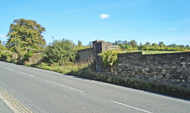
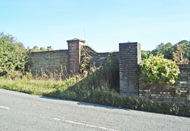
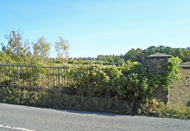
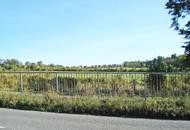
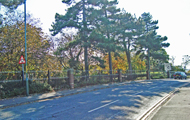
Perhaps the Hospital's original fencing along Gore Road.
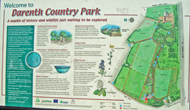
The Country Park map and history guide gives a mention to the two Hospitals previously on the site (above and right).
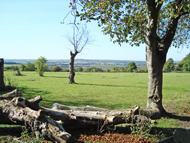

Southern Rest, the first cemetery at Darenth School and Asylum.
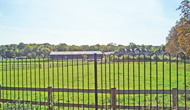



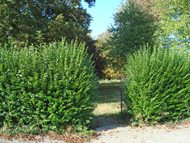
Entrance to Darenth Rest, the second cemetery.
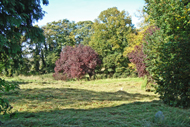
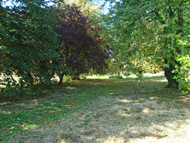
Darenth Rest
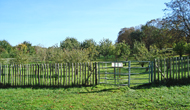
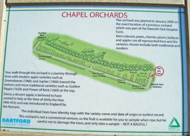
The Chapel Orchard from Darenth Rest.

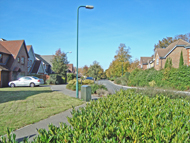
Bebbington P (ed) Social Psychiatry: Theory, Methodology and Practice. Transaction Publishers.
Black N 2009 The extraordinary tale of Dartford, the Hospital town. Journal of the Royal Society of Medicine 102, 522-529.
Glennerster H 1990 The costs of hospital closure: reproviding services for the residents of Darenth Park Hospital. Psychiatric Bulletin 14, 140-143.
Spensley FO 1913 A brief account of Darenth and its system of industrial training. Journal of Mental Science 59, 305-314.
https://aim25.com
https://api.parliament.uk
https://en.wikipedia.org
https://historicengland.org
www.artprintsforpleasure.com
www.asylumprojects.org
www.countryasylums.co.uk
www.dartfordhospitalhistories.org.uk
www.flickr.com
www.kentarchaeology.org.uk
www.nationalarchives.gov.uk
www.theyworkforyou.com
www.warmemorialsonline.org.uk
www.workhouses.org.uk
Return to home page